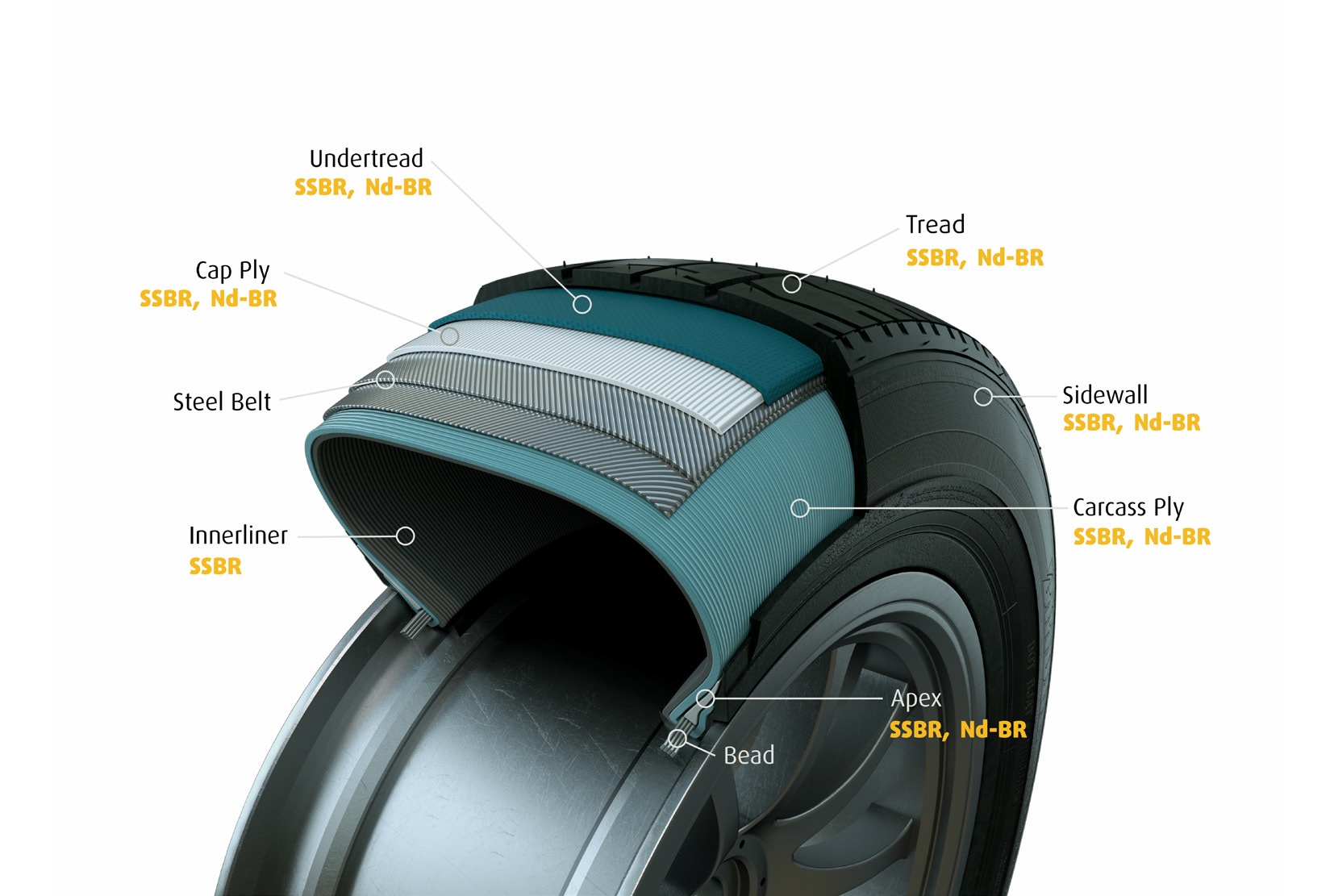There are three key ways to improve a vehicle’s fuel efficiency:
Though initially influenced by more stringent regulatory standards concerning fuel efficiency, auto manufacturers are making long-term investments in improving mileage across all classes of automobiles.
“Green tires” are one such investment, helping companies meet broader corporate sustainability goals as demanded by institutional investors interested in“ESG” compliant companies and a more environmentally conscious consumer base. Today, automakers’ and consumers’ demand for energy-efficient tires is one of the most important trends in sustainability around the globe – and green tires are a crucial element to meeting that demand.
Intrinsic to these advancements in green tires is Synthetic Rubber, specifically Solution-Styrene Butadiene Rubber (S-SBR), which provides the unique chemistry that allows tires to roll across the pavement with less energy loss – a concept which is referred to as “reduced rolling resistance.”
A tire’s rolling resistance is a major, if hidden, source of emissions and fuel consumption, accounting for:
You can learn more in “Science and Technology: Catalysts for Tires of the Future,” our white paper covering the application of synthetic rubber in performance tires. This article is Part One of a three-part series. Read Part Two and Part Three.
Footnote Citations:

Corporate News
Trinseo’s Chuck Fifelski Discusses EIFS & Stucco Applications in Walls & Ceilings Magazine
April 16, 2024
Corporate News
Trinseo Announces Release Date and Conference Call for its First Quarter 2024 Financial Results
April 11, 2024
Corporate News
Trinseo Introduces Groundbreaking Flame-retardant Plastic Grades Without Using PFAS Additives During Manufacturing Process
April 09, 2024